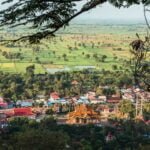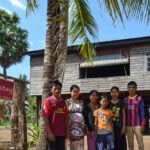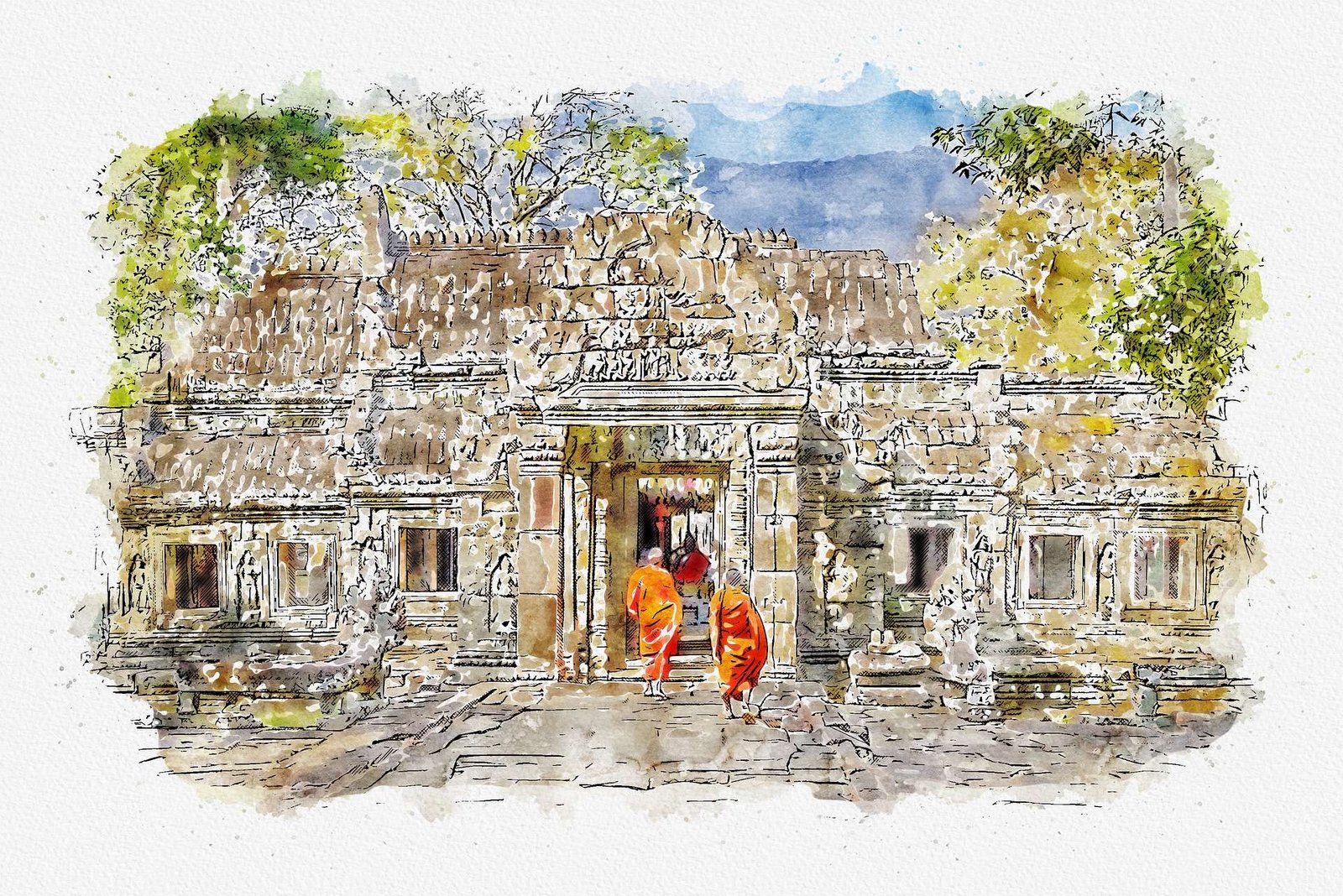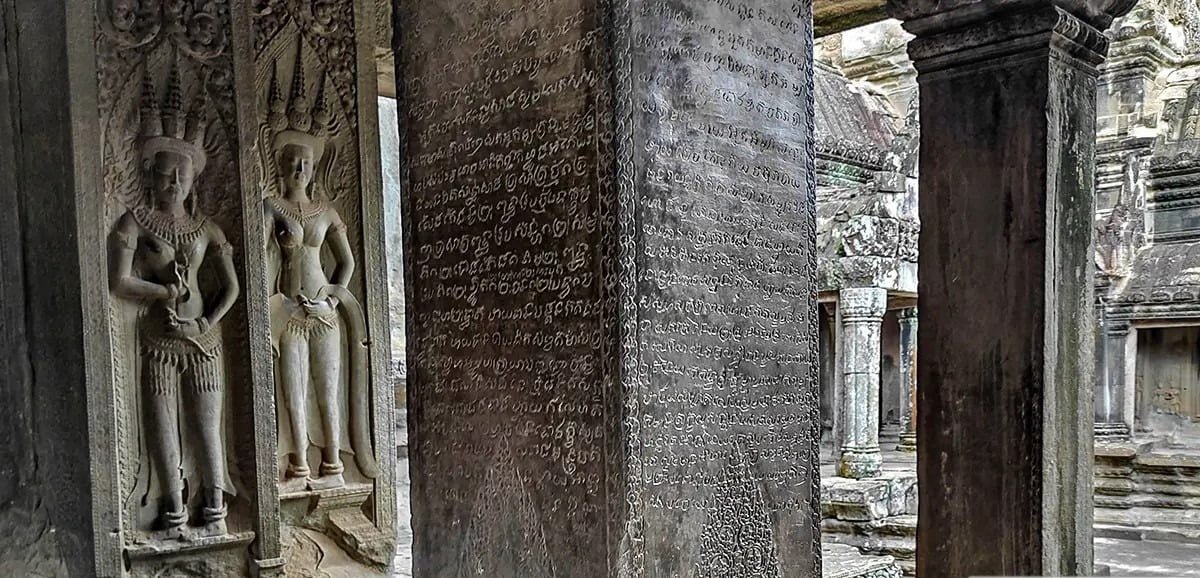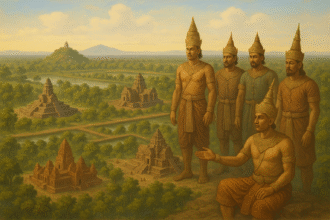Ancient History of Cambodia
The Ancient history of Cambodia is represented by the Funan kingdom, Chenla Kingdom, and the early Khmer empire. The Funan kingdom was established in the 4th century by an Indian Brahmin king named Kaundinya.
Due to this, it had a deep influence on Indian culture. Also, Cambodia was a trade route in mainland Indo-China.
These factors caused a profound influence of Hinduism and Buddhism on Cambodia. It is evident on the National flag of Cambodia, which features the Angkor Wat temple.
The earliest records of human existence in Cambodia can be found in the Laang Spean cave in Battambang province.
Earliest Prehistoric findings in Cambodia
The most significant prehistoric findings in Cambodia can be found in two places which are the Laang Spean caves and Samrong Sen along with Phum Snay.
In 2009, archaeological excavations were done in Laang Spean caves in the northwestern region of Cambodia.
These excavations found many human skulls and bones at the site, which dated back to at least 6000 BCE (8000 years old).
Archaeologists predicted that the area was inhabited by Hoabinhian people.
Hoa Binh was a tribe of hunters and gatherers that is said to have lived in the peninsula of Indo-China. Similar findings were also found at the Samrong Sen and Phum Snay in 2012.
Funan Kingdom
According to Legends, an Indian Brahmin prince named Kaundinya (Hun Ti’en in Chinese & Preah Thong in Khmer) came to Cambodia. There, he married Nagi Soma, a Naga princess (Lieu ‘Ye in Chinese).
Thus, he started the Funan dynasty in Cambodia. Cambodians of today believe that they are born from the Naga princess and Brahmin prince.
The Funan kingdom can be traced back to the 1st century.
The term ‘Funan’ was used by the Chinese cartographers and navigators to denote this region. In the local language of Cambodia, this kingdom is called Nokor Phnom.
Hindu art and culture flourished at this time and the Funan kingdom was the foundation of Hinduism in Cambodia. The majority of the people followed Shaivite and Vaishnavite Hinduism.
One can still find Hindu iconography, gods, and goddesses in ancient temples. The capital city of Funan was Vyadhapura which was said to have been located near the Prey Veng province.
Sanskrit was used as the primary language of the court, and Sanskritized Khmer was a common language among the people.
Along with Hindus, Mahayana Buddhists also existed in small proportions in Funan.
Chenla Kingdom
Until the 6th century, the Funan empire had gradually started declining due to many political and social factors.
The Chenla kingdom was established as a vassal state in the 6th century. But in the 7th century, under the ruler Chitrasena Mahendravarman, Chenla conquered Funan and gained independence.
Like Funan, Chenla was also an advocate of Hinduism. The Hindu culture had a strong influence on Chenla as well. Sanskrit and Old Khmer were the languages used by courts and common people.
According to the New Book of Tang, the Chenla kingdom split into two kingdoms in 706 that was Land Chenla and Water Chenla.
The Land Chenla ruled the northern region of Cambodia, while the Water Chenla ruled the southern region of Cambodia, mainly covering the coastline.
Land Chenla became a strong empire under King Jayavarman II, who later established the Khmer empire.
Chenla slowly started declining and fell prey to the Javanese pirates. Later, the region was conquered by the Javanese empire.
Early Khmer Empire
After the decline of the Chenla kingdom in the 9th century, the Khmer empire was established under the rule of King Jayavarman II.
It has been the greatest empire in Cambodia. Initially, it started as a strong advocate of Hinduism, but later on, it adopted Buddhism.


